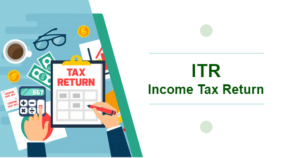 ITR for Interior designer
ITR for Interior designer
 Interior designers should maintain a comprehensive set of documentation to support their Income Tax Return (ITR) filing. This documentation serves as evidence to substantiate their income, expenses, and claims, ensuring transparency and compliance with tax regulations.
Interior designers should maintain a comprehensive set of documentation to support their Income Tax Return (ITR) filing. This documentation serves as evidence to substantiate their income, expenses, and claims, ensuring transparency and compliance with tax regulations.
1. Income Records:
Interior designers should keep records of all sources of income, such as client invoices, receipts, contracts, and payment confirmations. These documents showcase the nature of the services provided and the corresponding income earned.
2. Expense Receipts:
All receipts related to business expenses should retaine. This includes invoices for materials purchased, bills for rented workspace, utility bills, transportation expenses, and any other costs incurred directly for business purposes. These receipts are vital for claiming deductions and reducing taxable income.
3. Contractual Agreements:
Copies of contracts or agreements with clients, suppliers, and contractors should be kept. These agreements outline the terms and conditions of projects, rates, and timelines. They can serve as proof of the professional nature of the engagements.
To visit: https://www.mca.gov.in/
4. Bank Statements:
Regularly maintained and updated bank statements provide a clear trail of financial transactions. These statements validate the inflow and outflow of funds, as well as any business-related expenses or revenue.
5. Proof of Investments and Deductions:
Interior designers should retain documents related to investments made, such as receipts for tax-saving instruments (like insurance premiums, provident fund contributions, etc.), home loan interest certificates, and receipts for charitable donations. These documents support claims for deductions under various sections of the Income Tax Act.
6. GST and Service Tax Records:
If registered for Goods and Services Tax (GST) or other applicable taxes, designers should keep track of all GST invoices and payment receipts. These documents help in the reconciliation of GST returns and showcase compliance with tax norms.
7. Communication Records:
Emails, messages, and other forms of communication with clients, suppliers, and contractors should be archived. These records can provide context and evidence in case of disputes or audit queries.
Maintaining well-organized documentation is essential not only for accurate ITR filing but also for being prepared in case of tax audits or queries from tax authorities. By following these practices, interior designers can ensure a hassle-free tax filing process while staying compliant with tax laws.
